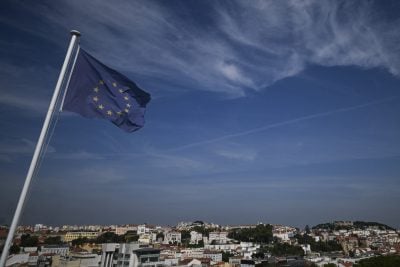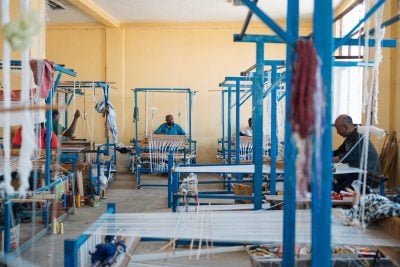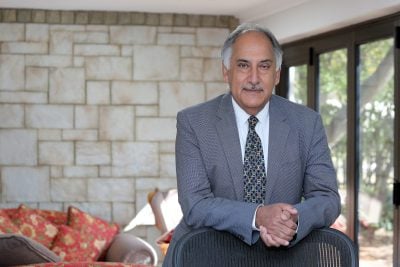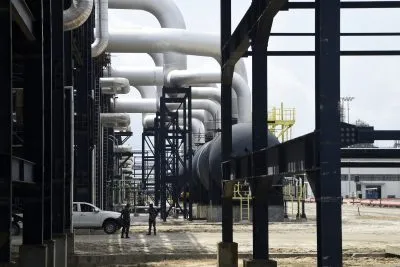African Business: Senegal’s tourism section faces many challenges. How is SAPCO dealing with them?
As soon as I took office last October, I wanted to have an exhaustive audit of the situation. I visited various tourist sites, holding working sessions with players across the entire value chain – hotel owners, artisans, the territorial authorities, police and judiciary, as well as the mayors.
This allowed me to obtain a fairly clear reading of the current challenges and draw up a roadmap in line with the government’s Plan for an Emerging Senegal.
Tourism is the second largest foreign exchange earner for Senegal. This sector must be able to constitute a real lever for growth and economic and social development. To paraphrase what the President has said, we want to make tourism, like air transport, a driver of development for the people of this country, and a driver of jobs.
SAPCO is at the centre of this. We occupy a strategic position in achieving the development and promotion of our coastline as well as entire tourism ecosystem of the country.
We also feel, given our work, that we can contribute in helping support other sectors such as such as agriculture, fishing and handicrafts, so it’s strategically important.
We are involved in the establishment and development of hotels, restaurants, shopping centres, residences, and the building of all the necessary infrastructure. This will also undeniably contribute to the creation of stable and sustainable jobs for the benefit of the local population.
In view of your background, does your appointment show a desire to bring a different approach to the management of tourism projects?
As part of the country’s post-Covid revival strategy, the President has given firm instructions to develop emerging tourist areas, such as Pointe-Saréne, Mbodiène, Joal Finio, the Saloum and Lower Casamance islands, and to revitalise the hospitality sector and boost employment.
My experience as a design engineer in civil engineering will certainly help me. Thus, six months after I took office, many things have been moving forward – for example, the Akon City project is now underway.
Other projects also underway, include the construction of the Saly International Ophthalmological Centre in Saly Portudal with a capacity of 45,000 patients per year, for which work was launched on 4 March 2023 and which should be delivered before the end of this year.
What about the development projects for the new tourist interest zones?
SAPCO has begun the planning and development of three integrated tourist zones. The aim is to have six new tourist zones by 2035.
These new projects will strongly contribute to increasing Senegal’s hotel capacity, diversifying our tourist offering, bringing in new investors and improved safeguarding of the coastline through preservation of the environment.
The tourist resort project at Pointe-Saréne, with the delivery and opening of the first phase of the 524-room Riu Baobab hotel, is the first initiative undertaken under this framework.
The project covers an area of 110 hectares and should eventually increase the number of hotels rooms in Senegal by at least 1,600 units. The roads and various networks serving the entire site are now 98% complete.
Other hotel projects such as the second phase of the Riu hotel, which will have a capacity of 500 rooms, will start in 2023. This is in addition to the construction of 45 top-of-the-range villas by the SABLUX group.
In the vicinity of Pointe-Saréne, we are building the seaside resort of Mbodiéne on a 504-hectare plot of land, opposite a 4km-long beach strip. This resort, based on an integrated and sustainable approach that encompasses seaside activities, culture and ecotourism, will have a total of 6,000 beds and will include hotels, top-of-the-range residences, modern sports facilities and leisure activities.
Development has started with the launch of work on the Akon City and African village projects, covering a total area of 55 hectares. These two projects, led by the internationally renowned Senegalese singer Alioune Badara Thiam (aka Akon), are positioned together as a green, futuristic, sustainable, technologically advanced and eco-responsible city.
The Sunrise Hotels & Resorts Group has also positioned itself to develop an ambitious 100-hectare tourism project, divided into four phases of 25 hectares. This project will increase our capacity by 1,400 hotel rooms, 460 villas, 550 chalets and various leisure facilities.
We have also carried out feasibility studies for the development of integrated tourist zones in the Saloum Delta and in Kaffountine-Abéné. In these two areas, land tenure is being secured and the emphasis is on their ecotourism potential as well as a sustainable approach focused on the preservation of the natural site and value creation.
Following the completion of related studies and of beach restoration work, we have begun to upgrade infrastructure at Saly Portudal. This year, 350 solar-powered street lamps have been installed, in addition to the laying of 17,500 square metres of paving.
On Cap Skirring, upgrading work is also continuing with the opening of access corridors to the beach and their development.
Finally, it is important to note that SAPCO is working on the Grande-Côte and the South-East zone to identify and acquire land suitable for tourist infrastructure. To this end, it has acquired 500 hectares in Tchep and has identified land in Potou and in the south-east towards Niokolo Koba.
Does SAPCO have the technical and financial means to carry out all these ambitious projects?
SAPCO generally carries out projects based on the expected revenues allocated to it in the investment budget of the state.
However, the plan is to reduce our dependence on the state’s resources. We feel that is the right way to go and this is why we are thinking of new models and alternative sources of financing.
We’re looking at public-private partnerships as well as having projects that are financed entirely by private capital. We’re assessing these options and we will submit our recommendations to the bodies responsible for validating SAPCO’s development strategy.
On the technical level, in addition to internal resources, SAPCO relies on the expertise of professional firms for the elaboration of development studies for its projects.
What about the diversification of the types of tourism on offer?
Diversifying our tourist offering goes beyond creating integrated tourist zones. It is an essential facet of SAPCO’s objective of establishing an attractive and sustainable tourism sector. The effects of climate change, particularly coastal erosion, have shown we cannot limit ourselves to the classic seaside tourist resorts that we have known for decades.
This is why, across the country, SAPCO is structuring different products around ecotourism, culture, nature, and ensuring that they remain anchored in the local specificities that characterise the “tourist map” of Senegal. This dimension has been taken into account in the upgrading work involved in the Saly Green City project for example.
In Saly Portudal, we have recently launched the construction of the Saly International Ophthalmological Centre, which will contribute to the promotion and development of medical tourism. The implementation of complementary components, such as the Convention Centre, will also be studied, so that Saly’s seaside attractions can be enriched by business tourism.
There is also religious tourism, which can be exploited to a greater extent, given the rich history and sociology of religions in various parts of Senegal.
This is more than opportune, as Senegal has known several great and charismatic figures of Islam as well as Christianity. It boasts holy pilgrimage sites, both Muslim and Catholic, such as the Magal of the Holy City of Touba, the Gamou of Tivaouane, the Pilgrimage of Ponpenguine, with imposing religious buildings and mausoleums to visit. To support this particular type of activity, within SAPCO we have a religious tourism coordinator.
What are the main arguments to invest in tourism in Senegal?
In addition to its 3,000 hours of sunshine per year, its 500km of beaches and its proximity to markets such as Europe and the Americas, we see Senegal as a gateway to Africa. Its diverse landscape and offering, coupled with its political stability make it a very attractive destination, for tourists and investors.
Senegal is indeed a model of democracy and good governance for the whole continent. We have been included in the “Club of the Most Beautiful Bays in the World” and for investors you have a dynamic economy with a government that is supportive of investors.
The vision set out in the Plan for an Emerging Senegal has at its centre a conducive business environment. Investors benefit from tax breaks, with no distinction between nationals and foreigners, not to mention the existence of guarantees and protection of property rights.
All these possibilities offered by the Senegalese market are bolstered by a well developed transport sector including the TER Express Train airport link, the BRT public transport system, the national motorway network, cross-border bridges, air transport provided by Senegal Airways, the Senegalese Airport Rehabilitation Programme known as PRAS and maritime transport with the Dakar Autonomous Port and the new Port of Ndayane.
Investing in tourism development projects in Senegal is therefore more than a winning bet, in a country with strong economic potential and poised to become one of Africa’s largest producers and exporters of gas and oil.
Read more about tourism in Senegal.
Read more about Senegal’s booming economy in our Senegal Dossier.
Want to continue reading? Subscribe today.
You've read all your free articles for this month! Subscribe now to enjoy full access to our content.
Digital Monthly
£8.00 / month
Receive full unlimited access to our articles, opinions, podcasts and more.
Digital Yearly
£70.00 / year
Our best value offer - save £26 and gain access to all of our digital content for an entire year!

 Sign in with Google
Sign in with Google 



